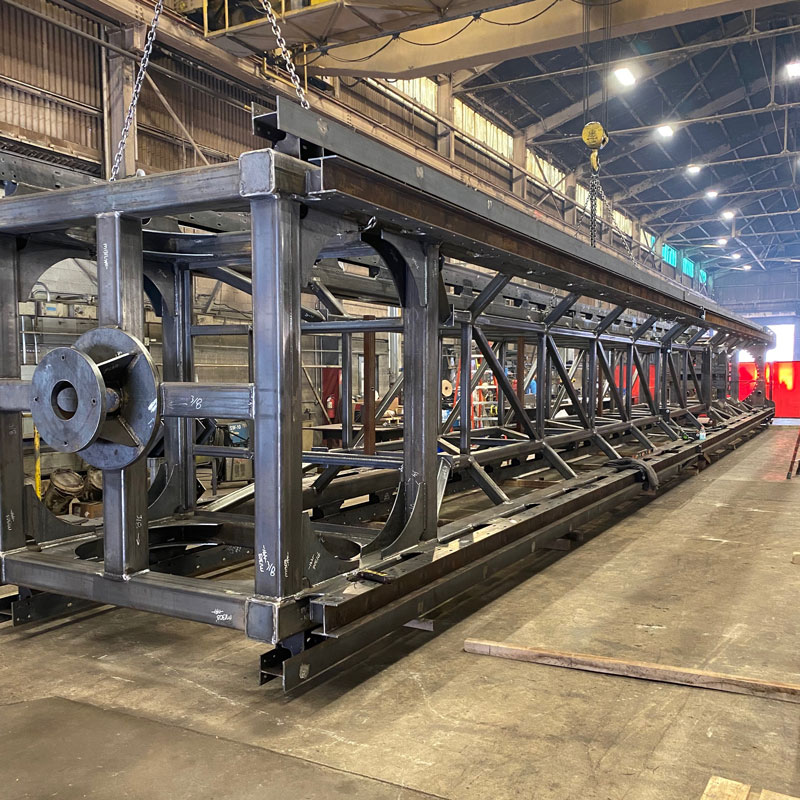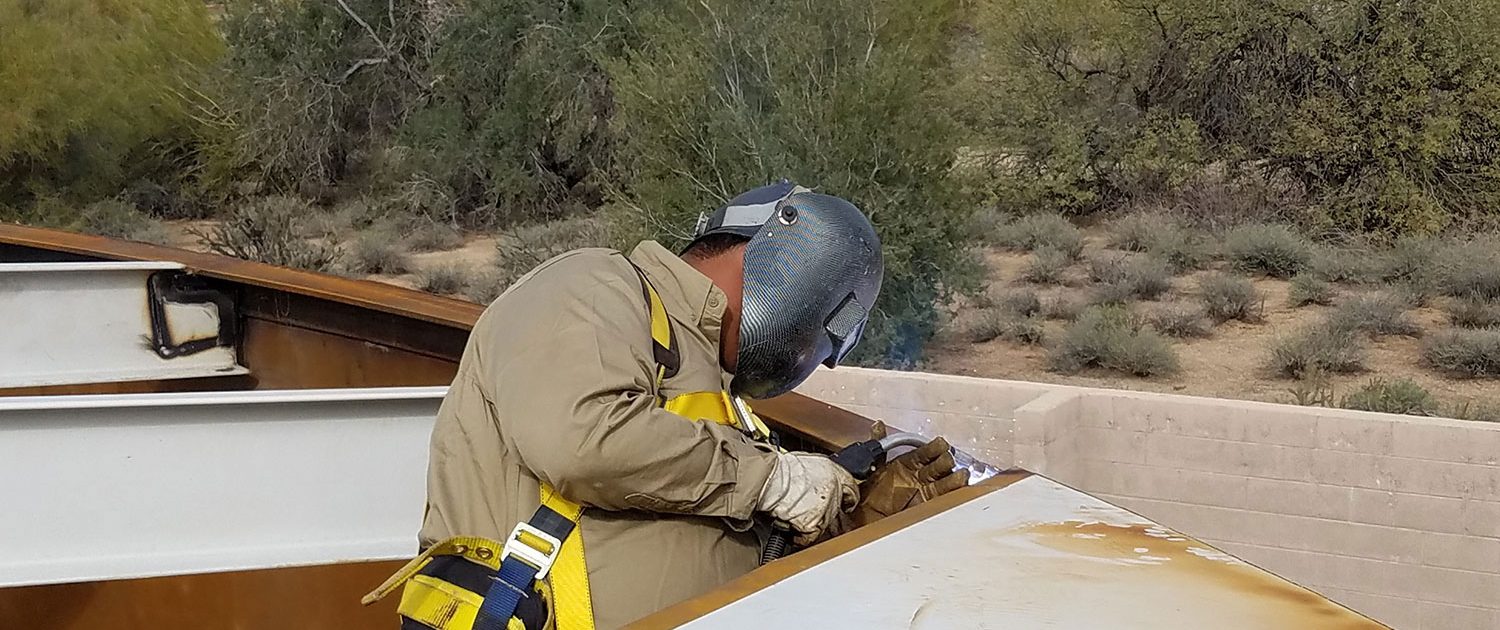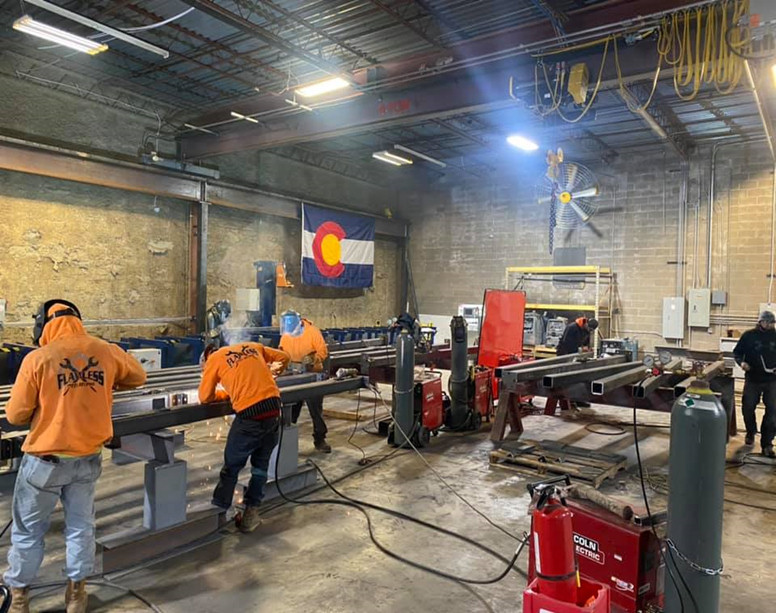Advanced Steel Fabrication Melbourne: Structure the Future Today
Advanced Steel Fabrication Melbourne: Structure the Future Today
Blog Article
Innovative Trends in Steel Fabrication: Enhancing Resilience and Precision
In the world of steel construction, the pursuit of toughness and precision has actually caused a wave of innovative fads that are reshaping the sector. From improvements in welding technologies to the assimilation of robotic automation in manufacture processes, the landscape of steel manufacturing is developing swiftly. High-strength alloy development, paired with the usage of 3D modeling and simulation software program, is pushing the borders of what is achievable in regards to structural honesty and precision. The expanding emphasis on sustainable methods in steel manufacturing is not only driving effectiveness yet also promoting an extra environmentally conscious technique to fabrication. These trends are not simply forming the existing but also laying the foundation for the future of steel manufacture, assuring further enhancements in durability and precision.
Advanced Welding Technologies
In the realm of steel fabrication, the adoption of innovative welding modern technologies has actually significantly transformed the market's method to accomplishing remarkable high quality and precision in architectural welds. Advanced welding innovations, such as laser beam of light welding and friction stir welding, have become game-changers in the field. Laser beam welding employs a focused laser beam to sign up with steel components with amazing accuracy and speed, making it suitable for detailed layouts and thin materials. On the other hand, friction stir welding develops unbelievably solid bonds by mechanically intermixing the molecules of the materials at the joint, removing the requirement for melting the steel. These modern technologies use many benefits, consisting of minimized heat-affected zones, minimal distortion, and boosted mechanical homes in the welded joints. By leveraging these innovative welding strategies, steel producers can elevate the resilience, toughness, and accuracy of their structural welds, fulfilling the significantly requiring demands of modern building and construction jobs.
Robot Automation in Manufacture
Embracing robotic automation has actually come to be a cornerstone of contemporary steel construction techniques, boosting and streamlining processes performance throughout the industry. Robots are transforming the method steel parts are made, offering exceptional accuracy and rate while lowering human mistake. These automated systems can handle repetitive tasks with regular accuracy, leading to higher high quality output.
One key benefit of robotic automation in steel fabrication is the capability to work around the clock without tiredness, dramatically raising manufacturing result. This continual procedure decreases downtime and increases task timelines, inevitably saving expenses for producers. Furthermore, robots can be programmed to perform intricate jobs that might be harmful or difficult for human workers, boosting security in the work environment.
Furthermore, robot automation enables seamless assimilation with various other digital innovations, such as computer-aided layout (CAD) software application and Net of Points (IoT) systems (steel fixing). This interconnected approach enhances interaction in between different stages of construction, maximizing workflows and making sure real-time monitoring and control. As the steel manufacture industry remains to advance, robotic automation stands out as a transformative force driving performance and precision in making procedures

High-Strength Alloy Advancement
The advancement of high-strength alloy advancement in steel fabrication is improving the market's technique to enhancing material resilience and efficiency. High-strength alloys are engineered to display premium mechanical buildings, such as enhanced tensile toughness, strength, and corrosion resistance compared to traditional steel qualities. By including these sophisticated alloys into fabrication processes, manufacturers can generate parts that stand up to higher tension levels and harsh environments, resulting in more sturdy and reliable end products.
One trick advantage of high-strength alloy development is the capacity to minimize material density without jeopardizing structural honesty. This not just results in lighter-weight parts but additionally adds to cost financial savings and improved performance in construction and setting up procedures. Furthermore, the enhanced strength-to-weight proportion of these alloys enables the layout and building of structures with greater load-bearing capacities while lessening overall weight.
3D Modeling and Simulation Software
Advancements in steel construction procedures have actually been significantly moved by the combination of sophisticated 3D modeling and simulation software tools. These devices allow producers to produce detailed online versions of their jobs, allowing them to imagine the last product with precision prior to any kind of physical work begins.

Lasting Practices in Steel Production
Integrating sustainable methods right into steel production procedures is important for decreasing environmental effect and ensuring long-lasting source availability. One crucial sustainable method is the fostering of energy-efficient innovations to lower greenhouse gas emissions during the steel production process. This consists of making use of renewable resource resources, such as solar or wind power, to power steel plants and implementing energy-efficient devices to optimize energy usage.
An additional crucial element of lasting steel manufacturing is the responsible sourcing of resources. This includes making certain that the iron ore and other resources utilized in steelmaking are acquired from ecologically pleasant and honest sources. By promoting openness in the supply chain and sticking to rigorous environmental requirements, steel makers can minimize the negative impacts of resource extraction on local ecological communities and areas.

Verdict
In verdict, the ingenious trends in steel manufacture such as sophisticated welding innovations, robotic automation, high-strength alloy growth, 3D modeling and simulation software program, and sustainable techniques are improving the longevity and precision of steel products. These improvements are transforming the steel fabrication market by improving high quality, sustainability, and efficiency. It is clear that the future of steel manufacture hinges on embracing these innovative innovations to satisfy the needs of modern building and construction and manufacturing sectors.
In the realm of steel construction, the search of sturdiness and accuracy has led to a wave metal fabrication melbourne of ingenious trends that are reshaping the sector.In the realm of steel construction, the adoption of innovative welding technologies has actually substantially revolutionized the market's strategy to achieving exceptional top quality and accuracy in structural welds. As the steel construction sector continues to progress, robot automation stands out as a transformative force driving effectiveness and accuracy in manufacturing procedures.
Furthermore, recycling and recycling steel scrap and waste products play a substantial role in enhancing the sustainability of steel production. steel fabrication melbourne.In conclusion, the innovative fads in steel construction such as innovative welding modern technologies, robot automation, high-strength alloy development, 3D modeling and simulation software, and sustainable practices are enhancing the sturdiness and precision of steel products
Report this page